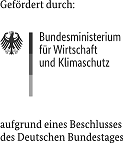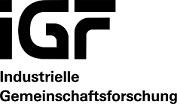Fluid structure oscillation for drainage optimization in compressed air filtration
The research project IGF Project No. 22456 N focuses on improving the efficiency of compressed air filtration systems through the targeted application of fluid-structure oscillations. In industrial operations, dirt and oil enter the compressed air circuit and must be filtered out. Oil accumulates in the filter media, causing clogging and thereby generating pressure loss. This, in turn, increases the operating costs of the compressor. The main objective is to achieve a reduction in pressure loss and operating costs by optimizing the drainage of liquid accumulations, especially oil droplets, in the filters. This is accomplished by exciting the natural frequency of the liquid to accelerate its movement and thus decrease pressure loss. Additionally, the project aims to gain fundamental insights into fluid movement under the influence of oscillations to develop a methodology for targeted drainage. Through the targeted application of fluid-structure oscillations, the project aims to reduce saturation levels and thereby decrease pressure loss across the filter. This is intended to result in a reduction in operating costs. This endeavor not only provides a solution to the specific challenge of compressed air filtration but also has the potential to be transferred to other technical problem areas where targeted fluid movement is required.

The oscillation of the droplet occurs in two ways. Using a shaker, the substrate and hence the droplet can be selectively excited. Adjustable parameters include frequency, amplitude, and acceleration, with excitation possible in both vertical and horizontal directions. Additionally, disruptors can be integrated into the filter. When fluid flows around the filter, these disruptors create separation vortices that excite the droplet. These vortices depend on the disruptor and the flow velocity and can vary within the filter.
This research project was funded by the Federal Ministry of Economic Affairs and Climate Action (BMWK) within the Industrial Cooperative Research (IGF) under the IGF-project number 22456 N on the basis of a decision by the German Bundestag.



